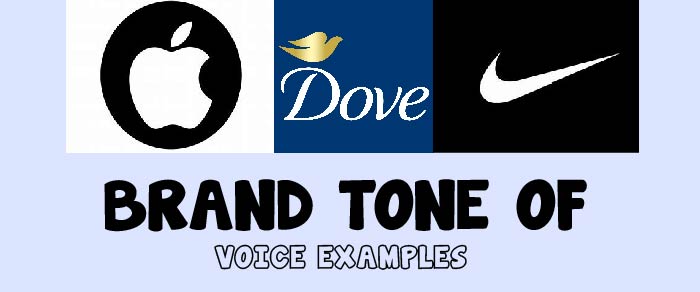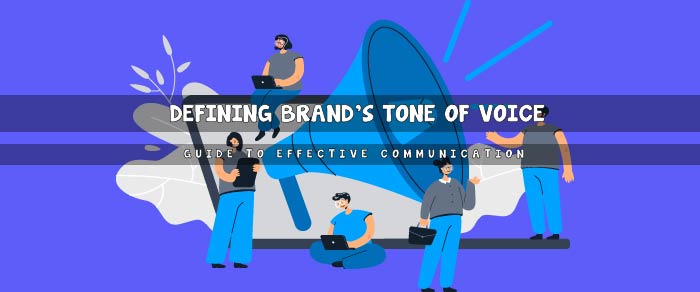In today’s digital landscape, where brands are competing for attention in a sea of content, having a strong voice can make the difference between drowning in the noise or building a loyal following. But how do you go beyond delivering information and build a real connection with your audience?
The answer lies in cultivating a distinct tone of voice, the invisible thread that runs through your communication and shapes readers’ perceptions.
Understanding what makes your voice unique
What is tone of voice?
Put simply, it’s the personality you bring to your text. It’s not just about your words, it’s about the feeling they evoke.
Imagine talking to a friend in a coffee shop while versus giving a presentation in a boardroom. Both are forms of communication, but the tone of voice adapts to the situation and the audience.
Why is tone of voice so important?
Your tone of voice is the invisible thread that runs through your communication and determines how your audience perceives your brand. It’s about more than just words, it’s the personality you radiate.
Let’s find out why a consistent and compelling tone of voice is so important for businesses:
- Building brand identity: Your tone of voice reflects your brand personality. Is your brand playful and youthful? Informative and authoritative? Or a mixture of both? A clearly defined tone of voice helps to create a recognizable image that resonates with your target audience.
- Connect with your target audience: No reader wants to feel like they’re being talked up to or bombarded with jargon. Your tone of voice should bridge the gap and foster a sense of connection and engagement. It’s about having a conversation, not a lecture.
- Impact on customer perception: The way you communicate determines how people perceive your brand. A friendly and helpful tone can encourage trust and loyalty, while a dry or dismissive tone can put potential customers off.
Deconstructing the elements of tone of voice
Now we know how important tone of voice is. How can you develop a tone of voice that reflects the essence of your brand?
Here are the key elements you should consider:
- Personality: Your brand voice should embody your core values. Are you passionate and innovative? Reliable and trustworthy? Think about the adjectives that best describe your brand and let these qualities shine through in your copy.
- Style: This is about the level of formality you choose. Does your audience respond more to a casual, conversational style or a more formal and authoritative approach? Consider factors such as industry standards and your target audience when making this decision.
- Word choice and vocabulary: The words you choose will have a big impact. Strong verbs and lively language will engage readers, while complex jargon will be a barrier. Adapt your vocabulary to the level of knowledge of your target audience and aim for clarity without sacrificing your personality.
- Attitude: Don’t underestimate the power you have in conveying emotion. A playful tone can be light and engaging, while a more serious approach conveys confidence and authority. Choose the attitude that best suits your content and brand message.
- Consistency is key: A consistent tone across all platforms (website, social media, email marketing) strengthens brand recognition and builds trust. Imagine a brand that uses slang on Twitter and jargon on their website – confusing, right? Developing a style guide can help maintain consistency and ensure your brand speaks with a unified voice.
Develop your brand’s voice: A step-by-step guide

Develop your brand’s voice: A step-by-step guide
Defining your brand’s unique voice is a journey, not a destination. It requires you to carefully consider your target audience, brand personality and desired impression. By understanding these elements, you can develop a voice that resonates with your customers and sets you apart from the competition.
Are you ready to cultivate your unique voice? Here’s a guide for you:
- Identify your target audience: Understanding who you’re communicating with is paramount. Research your target audience’s demographics, interests and preferred communication styles. Imagine you’re creating content for a friend, not a faceless crowd.
- Define your brand personality: Think about your brand’s core values and mission statement. What message do you want to convey? What qualities do you want to be associated with? These characteristics will help you to create the basis for your brand personality.
- Create a brand voice diagram: Create a document in which you define the desired tone of voice for different situations (e.g. blog posts, social media headlines, customer service emails). This includes details such as the level of formality, appropriate vocabulary and acceptable humor.
- Get inspired (but don’t copy!): Look at brands you admire and analyze their tone of voice. What makes them successful? How do they manage to connect with their audience? Learn from successful examples, but don’t forget that the goal is to develop your own voice.
Brand voice vs. tone of voice: What’s the difference?
Although they’re often used interchangeably, brand voice and tone of voice are different concepts.
Brand voice is the core of your brand’s personality. It reflects your values, your mission and your overall character. Think of it as the foundation on which your communication is built. It remains consistent across all platforms and interactions.
Tone of voice is the way you express your brand’s personality in certain situations. It’s the tone of voice, attitude and style you use to connect with your audience. The tone of voice can vary depending on the context, platform or target audience.
For example, a technology company might have an innovative, informative and customer-centric brand tone. On social media, however, the tone might be playful and casual, whereas in a press release it might be more formal and professional.
Understanding the difference between brand language and tone of voice is crucial to developing effective communication strategies. Your brand voice creates your identity, while your tone of voice helps you connect with your audience on a deeper level.
By aligning your brand voice and tone of voice, you can create a cohesive and memorable brand experience.
Explore the nuances: tone of voice in different industries
The way you communicate depends heavily on the industry you work in. Here you can find out how different industries deal with tone of voice:
- Tech industry: In the tech industry, which is often characterized by innovation and problem solving, tech brands tend to take an informative, authoritative and sometimes playful tone. Think concise explanations, jargon-free language and a focus on the benefits for the user.
- Fashion industry: This industry thrives on creativity and ambition. The tone is often glamorous, aspirational and visual. It’s all about telling stories and evoking a sense of desire.
- Financial sector: Trust and credibility are key in the financial sector. The tone is usually formal, professional and reassuring. Clarity and transparency are important, with an emphasis on security and stability.
Learn from Brand tone of voice examples

Learn from Brand tone of voice examples
Let’s analyze some brands that have successfully established a firm tone of voice:
- Apple: Apple is known for its minimalist esthetic and focus on user experience. Apple’s tone of voice is clear, sophisticated and aspirational. They use simple language and focus on the emotional benefits of their products.
- Nike: Nike is the epitome of athleticism and motivation. Nike’s tone is powerful, inspiring and inclusive. They use powerful imagery and stories to create a deeper connection with their audience.
- Dove: Dove focuses on self-esteem and body awareness and is empathetic, inclusive and authentic. They use real people and relatable stories to build trust and loyalty.
Analyze your competitors: Find your unique voice
Understanding your competitors’ tone of voice will help you identify gaps in the market and differentiate your brand.
Ask yourself:
What is their general tone of voice?
How does it resonate with your target audience?
What opportunities are there to stand out?
By analyzing your competitors, you can develop a tone of voice that complements your unique brand identity and positions you as a real alternative.
Conclusion: Your voice, your brand
Defining your brand’s tone of voice is an ongoing process. It’s about understanding your target audience, embodying your brand values and creating a consistent experience across all touchpoints. Remember that your tone of voice is a powerful tool to build relationships, drive engagement and ultimately achieve your business goals.
Feel free to experiment and find what works best for your brand.
Additional resources:
- Consider creating a tone of voice guide or style guide to ensure consistency within your team.
Here’s a tone of voice chart template you can use to set your brand’s tone of voice for different content types:
| Content Type | Formality | Word Choice | Attitude | Example |
| Blog Posts | Informal | Plain Language | Informative | “Hey there! Today, we’re diving into the world of content marketing. Let’s talk about how to create engaging blog posts that actually convert.” |
| Social Media Captions | Informal | Plain Language | Playful |
“Feeling lost in the content jungle? We’re here to guide you. Let’s create some awesome content together!”
|
| Email Marketing | Formal | Plain Language | Serious |
“Dear valued customer, we’re excited to announce our latest product launch. Discover how [product] can benefit your business.”
|
| Website Copy | Formal | Jargon (if applicable) | Serious |
“Our company is committed to providing innovative solutions for [industry]. Learn more about our products and services.”
|
| Customer Service Emails | Formal | Plain Language | Serious |
“Dear [customer name], we apologize for any inconvenience caused. We’re working diligently to resolve your issue. Please let us know if you have any further questions.”
|
| Press Releases | Formal | Jargon (if applicable) | Serious |
“[Company Name] Announces New Partnership with [Partner Company]”
|
| Advertising Materials | Informal or Formal (depends on target audience) | Jargon (if applicable) | Playful or Serious |
Informal: “Get ready to level up your game with our new [product].” Formal: “Introducing [product], the ultimate solution for [problem].”
|
- Invest in workshops or training so that your team understands the importance of tone.
- Review and refine your tone of voice regularly based on audience feedback and evolving brand identity.
Are you ready to give your brand a voice that captivates?
By following these steps and infusing your brand’s personality into your communication, you’ll leave a lasting impression on your audience. Remember that your tone of voice is an ongoing journey, so keep experimenting and refining your approach.
Start developing your unique voice today and watch your brand blossom!
